This is the second installment of a three-part series about my trek to Machu Picchu. Read the first installment and the third installment here!
The second day of the Salcantay trek was beautiful.
We’d had a rather dramatic start to the morning with my bout of altitude sickness at the Salcantay Pass, but eventually we arrived at our lunch spot under crisp blue skies and snowy peaks and took a well-deserved rest.
Our planned route for the afternoon was simple enough. Once the steep ascent to the pass is over, day two of the Salcantay trail is pretty much a long, slow descent: the landscape around us would change from alpine and snowy to dense sections of forest until we reached our campsite for the night.
The paths we began to follow wound around the mountainside. They were narrow and somewhat rocky, and to our right was a valley thick with treetops. I couldn’t see much beyond them, so had no real sense of how steep the drop might be.
Suddenly, I heard a shout. I turned around, expecting to see that someone behind me had fallen over. Instead, I saw the figure of my friend Fiona; she was almost horizontal and strangely frozen, with a cloud of dust around her.
But more prominently? There was a giant black horse straight in front of her: head looming, its eyes bloodshot, veins bulging at the sides of its neck.
Only after the realisation that this mad creature was charging down the path, with no regard for us, did I hear the thundering of its hooves and feel the heat as its body brushed violently past me. I was knocked, back first, into the rocks before I knew what was happening.
The mood shifted in an absolute instant. Without any understanding as to why, we were suddenly in a war zone.
Broken bones with no solution in the mountains of Peru
The contents of our backpacks began flying across the path as we hurriedly searched for baby wipes, clean water, antiseptic, painkillers: anything which could potentially help.
“Does anyone know how to make a sling?” someone shouted, as Fiona’s cries got louder.
“It’s my shoulder, it really hurts!” she wailed, cradling her injured arm with the other.
She pulled the edge of her top down, and against the pale skin of her collarbone we saw a jutting lump of bone. It didn’t look right. And when Fi glanced down and saw what we could see, her face twisted into an expression of awful, vulnerable realisation.
“Oh god, it’s broken! I’ve broken my collarbone, haven’t I?”
Suggestions of a solution were thrown out into the still dusty air. Was there an emergency helicopter anywhere? A doctor nearby? Where was the nearest road? But our clearly shell-shocked guide shook his head at our every suggestion.
There was no phone signal in the mountains. There was no drivable road, no place for a helicopter to land, and no medical facilities anywhere near our location.
We were completely stranded in the mountains of Peru.
Fi was panicking and could barely stand, let alone walk. It quickly became apparent that our only option was to carry her closer to civilisation. Unfortunately, our group was comprised of six girls, two guys and one panicking guide – and it was obvious that our combined efforts weren’t going to get her very far.
But as luck would have it, an organised group of trekkers soon caught up with us, and in their midst were two trainee nurses and a few medical students. In no time, a tall burly Irish lad named Connor (who was carrying a tree branch as a hiking pole) became our new favourite person in Peru.
First stirrings of a rescue
Within a few minutes, Connor the nurse had established that her collarbone was almost certainly broken. She’d need a sling to keep it supported, he informed us, and we had to get her to a doctor as soon as possible.
And if nobody was coming to help us, we’d have to go to them.
Never underestimate the ability for a group of strangers to band together. Even after experiencing an element of the same when we crossed the Peruvian border, it was still amazing to watch various people construct a stretcher from walking poles and waterproof jackets, and at least eight different men from various trekking groups immediately volunteer to help carry an injured girl through the mountains.
Once we’d pumped Fi full of as much medication as we could muster, she started calming down enough to allow the guys to get her on the stretcher. And so off we went, accompanied by a substantial group of mildly confused trekkers, none of whom really wanted to overtake us and leave the drama behind.
The walk felt never ending. Not because of the difficulty, but because we worried constantly about how Fi was doing – and what was going to happen when we finally found her help.
An eventual sense of enlightenment
Various medically trained trekkers tried to put us at ease; that collarbone breaks don’t need a cast, but that she might be in need of an operation – in which case, Cusco would be the only place she could go.
And no, there was barely any way she’d make it to Machu Picchu now.
After four hours of walking/stretcher carrying we finally reached our intended campsite for the night, and informed Fi of our group’s decision; that as many of us as possible would go onwards to Cusco with her to find a hospital. There was no way we wanted to leave her side in her current state – and we wanted to make sure Sam, her boyfriend, had as much support from us as we could offer.
But sadly we didn’t have a choice in how things went.
Once they’d put Fi in the front passenger seat, the porters instructed us to jump in the back of a truck alongside the tents and gas canisters, and our group drove two hours through the darkening evening to Santa Teresa.
This was the location of the third night’s campsite. We were told to stay behind, while Sam and Fi drove onwards to the medical centre.
The rest of us spent the evening staring blankly into the heat of a campfire, still trying to absorb what had happened. Unbeknownst to us, the medical centre’s nurses were attempting to convince Fi that her collarbone was only dislocated – “I’ll try to pop it back into place” – only leaving her alone when she started screaming.
They had to endure another drive to a third clinic, before being told to board a night bus to Cusco at 3am, where she finally had an operation at 1pm the next day – a full twenty four hours since the horse first charged past her.
We wouldn’t see her again until we’d eventually reached Machu Picchu and returned to Cusco.
Musings on the Salcantay mountain
The Salcantay trek is known to be difficult, but none of us expected it to be like this. Nobody could have imagined that one horse would have the ability to eclipse our day, our trek, and destroy two people’s chances to see Machu Picchu.
And the overarching worry that remains etched into my head? The crazed horse was wearing a saddle, but no rider. Despite spending over an hour in the same spot on the trail as we tried to cope with Fi’s injuries, not a single person came past in search of their lost horse.
But maybe Salcantay does watch over the people who trek along its passes.
Because although Fi’s luck seemed terrible at first, things could have been a hell of a lot worse. Maybe the small piles of rocks that sit at Salcantay pass do more than simply honour the mountain gods.
Perhaps they protect their creators as well.

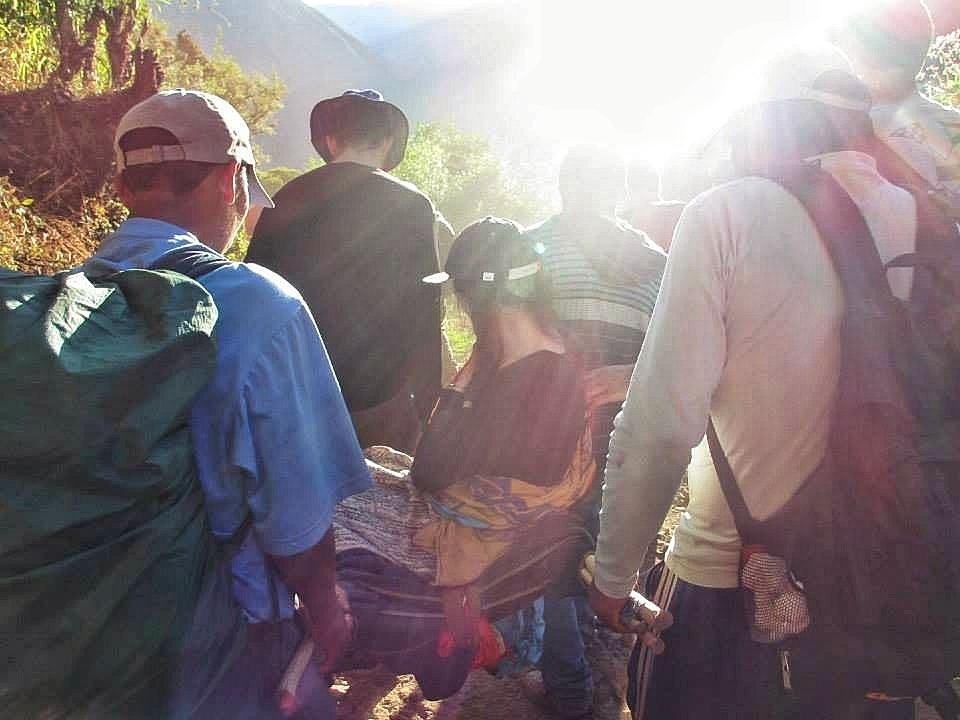


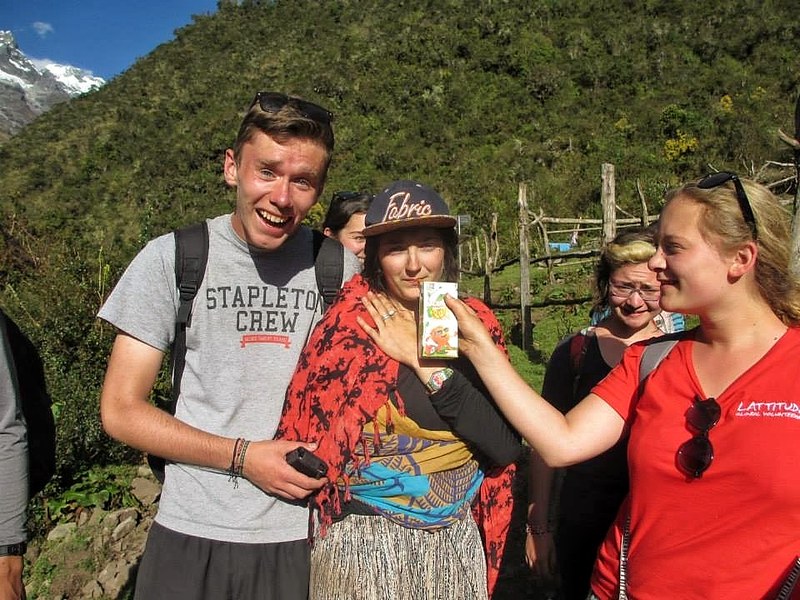
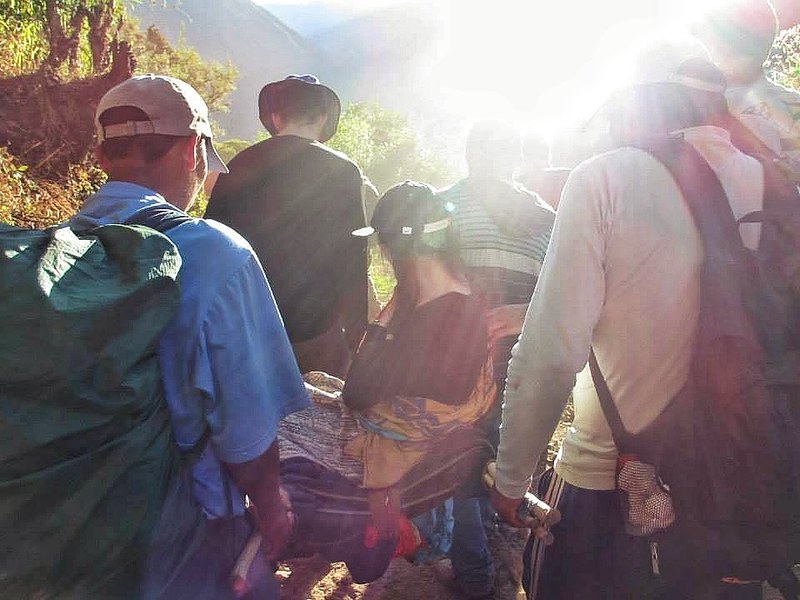

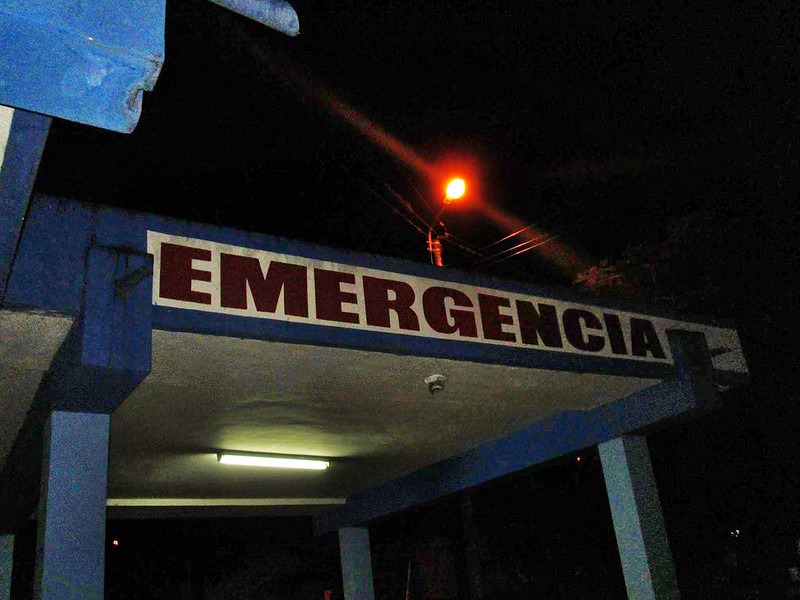


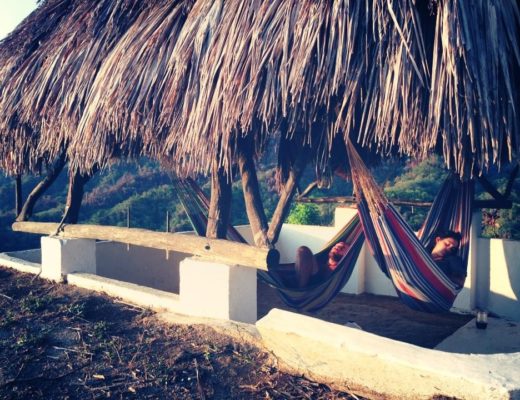

18 Comments
The Salcantay Trek: Riding a Horse with Altitude Sickness
June 7, 2013 at 12:22 am[…] is the first installment of a three-part series about my trek to Machu Picchu. Read the second installment here – the third installment is coming […]
Britany
June 7, 2013 at 12:22 amOMG when I read your first installment, I almost mentioned how scary that horseback riding looked. And I LOVE horses. But on that narrow path with those very nervous looking horses — it just doesn’t seem safe, and your experience proved my fear correct. One person in our group fell off as well but was unharmed. Then, when she chose to dismount, the horse decided to go barreling past our group and down onto the side of the cliff. The whole group screamed, thinking we were about to watch a horses tumble to its death but he somehow stayed upright and just kept running.
Good to hear your friend is alright now but that must have been an awful experience for her.
Flora
June 17, 2013 at 3:31 amSadly I’m not surprised that you had a similar experience as us – it was terrifying to realise how easily someone could just topple off the side of the path! I’m seriously glad we didn’t see a horse tumble over though, that must have been horrible to watch. Maybe the horse who rushed us had just had his rider dismount as well… That’s a much more positive spin than my original thought of an injured rider lying somewhere with no help.
Luckily Fi’s doing a lot better now – I’m pretty sure her fear of horses is more prominent now though!
Josh Dent
June 7, 2013 at 8:21 amWow! I know it was an unfortunate situation. But, don’t you think you were extremely lucky to find the med students/ doctors hiking behind you? Best wishes to a speedy recovery for your friend!
Flora
June 17, 2013 at 3:32 amWe were unbelievably lucky to have medically trained hikers in the group behind us! I still can’t process how unlikely that was…
Amanda
June 7, 2013 at 3:01 pmHoly crap, wow, what an ordeal! So glad that your friend ended up being okay! Scary to think that there’s no way to contact help on that trek…
Flora
June 17, 2013 at 3:36 amIt’s probably one of the most cast-iron reasons for why you should always be trekking with at least one other person. Particularly in that kind of terrain, with no phone signal and no structured plan in place for what to do if someone gets injured. I don’t like to think how much worse it could have been for someone trekking solo…
Brittany @ Paws for Beer
June 8, 2013 at 6:26 pmoh my goodness what a scary situation. It is odd that no one claimed that run away horse. Makes you wonder if the rider was OK as well!!??! Glad your friend is OK.
Flora
June 17, 2013 at 3:42 amI was expecting a breathless and unseated rider to appear for at least the first half hour after the accident. Then when nobody appeared I stopped thinking about it as I didn’t want to entertain the prospect that the rider was even more badly injured than my friend… I still hope against hope that nobody else got hurt.
Helen in Wonderlust
June 9, 2013 at 9:32 pmOoh my goodness, how terrifying! Sounds like such an ordeal. Hope she’s ok now!
Helen
Flora
June 17, 2013 at 3:42 amIt was pretty intense! Luckily she’s back in England now and doing a lot better 🙂
Beth
June 11, 2013 at 9:01 pmOh I can just imagine how terrified she was, being in a strange place, people probably not speaking her language very well, worried about how she was going to get through it… she was SO lucky to have the med students behind her AND to be able to get to a hospital by truck. I’m glad she’s ok!! Surgery in Cusco would have scared the living daylights out of me. Crazy experience!!
Flora
June 17, 2013 at 3:44 amI think it scared her quite a bit too – although by the time she arrived in Cusco’s hospital it was infinitely cleaner, friendlier, more professional and more English-friendly than every other medical place she’d visited that night so I think she was more relieved than anything else!
The Salcantay Trek: Why I Closed my Eyes at Machu Picchu
June 14, 2013 at 12:21 am[…] is the final installment of a three part series about my trek to Machu Picchu. Read the first and second installments […]
Sometimes I'm Scared to Travel - But That Doesn't Stop Me
August 2, 2015 at 10:55 pm[…] out of a plane from time to time. I trek for three days in the Peruvian mountains, coping with horse-broken collarbones as a result, and I sign up for a month of walking in Spain (which I don’t think my feet are […]
How to Cope with Getting Sick when Travelling
August 31, 2015 at 10:53 am[…] travel and health insurance, and make sure you read the policy thoroughly, because you never know. Breaking your collarbone when you’re hit by a rogue horse en route to Machu Picchu is never fun, but it’d be a […]
So You Want to Volunteer in South America?
February 11, 2016 at 9:52 am[…] environment means entertaining the prospect of bizarre incidents happening. There might be a broken collarbone caused by an errant horse; an unexpected transit strike leading to a day of hiking and heatstroke, or even papier mache […]
15 Scary Travel Moments Around the World - Part I | Longest Bus Ride
August 5, 2016 at 1:48 am[…] Blog | Facebook | Instagram […]